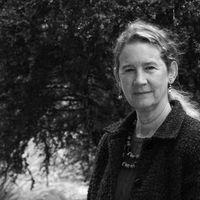Lara Herstrom | Louisiana State University (original) (raw)

Related Authors
St Stephen's University, New Brunswick, Canada
Uploads
Drafts by Lara Herstrom
In our modern culture, identity plays a significant role in how we understand ourselves in relati... more In our modern culture, identity plays a significant role in how we understand ourselves in relation to our world. It colors how we see ourselves, how others see us, and how we see others. Because of this, from early childhood we are constantly trying to define, " Who am I? " In our pre-teen and teenage years, this may be expressed as rebellion as we start to formulate ideas separate from our parents and then struggle with how to express ourselves while still trying to maintain household order. This self-identifying does not stop with adulthood. While we may grow secure with who we think we are, many people will experience a mid-life crisis as this security is tested. It is through this proving that we might discover that our self-identity is constantly changing and instead of deriving security from knowing exactly who we are, we become secure from feeling confident in our abilities, and accepting that our self-definition is constantly changing.
Many different forms of Christianity emerged in the early first centuries after the death of Chri... more Many different forms of Christianity emerged in the early first centuries after the death of Christ. These groups were based on perceived significances in texts and cultural interpretations. Among all these various communities of Christians, one consistency seems to have been the concept of martyrdom. This paper will examine the concepts of suicide, sacrifice and martyrdom in the ancient world and how those understandings may have changed over time to affect our modern-day constructions of these ideas.
In our modern culture, identity plays a significant role in how we understand ourselves in relati... more In our modern culture, identity plays a significant role in how we understand ourselves in relation to our world. It colors how we see ourselves, how others see us, and how we see others. Because of this, from early childhood we are constantly trying to define, " Who am I? " In our pre-teen and teenage years, this may be expressed as rebellion as we start to formulate ideas separate from our parents and then struggle with how to express ourselves while still trying to maintain household order. This self-identifying does not stop with adulthood. While we may grow secure with who we think we are, many people will experience a mid-life crisis as this security is tested. It is through this proving that we might discover that our self-identity is constantly changing and instead of deriving security from knowing exactly who we are, we become secure from feeling confident in our abilities, and accepting that our self-definition is constantly changing.
Many different forms of Christianity emerged in the early first centuries after the death of Chri... more Many different forms of Christianity emerged in the early first centuries after the death of Christ. These groups were based on perceived significances in texts and cultural interpretations. Among all these various communities of Christians, one consistency seems to have been the concept of martyrdom. This paper will examine the concepts of suicide, sacrifice and martyrdom in the ancient world and how those understandings may have changed over time to affect our modern-day constructions of these ideas.











